This 1971 Chevrolet Camaro is a rare bird! The SS396 option was still available but not selected by many that year as the performance bug was starting to recede. Throw in the SS/RS package coupled with this Camaro’s beautiful condition, and it’s a pretty special car. I have noticed a couple of inconsistencies, so let’s see if we can ferret those out while we review this Chevy. It’s located in Lakeland, Florida and is available, here on eBay for a current bid of $40,100 with the reserve not yet met.
Virtually identical to the-new-for-1970 redesigned Camaro, the 1971 production numbers were about 10K units lighter than ’70’s in spite of experiencing a full model year run as opposed to ’70’s truncated run. Total output, according to Nasty Z28.com, was 114,630 copies with 8,377 wearing the Super Sport (SS) designation. The Rally Sport (RS) package adorned 18,404 Camaros but that number was spread across the base Sports Coupe, SS, and Z28.
The seller tells us that this 71K mile example has had one respray in its original Antique White hue. It looks flawless, nothing is out of place. The RS package, which had been around since 1967, no longer included hideaway headlights but instead relied upon an “endura” grille surround and bumperettes on either side of a black finished grille. The front relocated turn signals also featured vertical trim pieces while the taillights received bright trim enhancements. And, being an SS396, this Camaro, in traditional SS396 form, received a black finished rear valance panel. The first inconsistency that I spotted is the 15″x7″ Z28 wheels. The SS model, 350 or 396 engine equipped, is supposed to have 14″x7″ steelies with argent finished rally wheels as an option so my guess is that these are a nice substitution/upgrade.
Now, the heart of the matter is under the hood where a 300-gross HP, 402 CI, V8 engine resides. It’s called a 396 but Chevrolet stopped making 396s at the end of the 1969 model year when they decided, for whatever reason, to bore the 396 out .030″ for a 402 CI displacement. The thing is, the 402 was never called a 402, it was still known as a 396 (the “SS396” moniker still had marketing panache), or in some cases, a 400 “Turbo-Jet” engine – it depended on the application. Regardless, of the 8,377 SS-equipped Camaros built in ’71, only 1,533 holstered the 396/402 engine. For ’72, its final year, it all but disappeared as tightening emission control standards pushed performance further into the back seat. And that brings me to inconsistency number two, and that’s the M22 “rock crusher” four-speed manual transmission. According to GM’s Heritage Center publications, this supposedly blow-up-proof gearbox was only available in the ’71 Camaro if the Z28 option was selected. So, is it original and the result of inconsistencies in availability, or has it been swapped in? There’s no way to know for sure. But it’s easy enough to verify, just drive the car. While it has the same ratio set as the close-ratio M21, which was available with the big-block engine, the M22 sounds like someone forgot to fill it with lube – it has a serious whine to it! Finally, no more H.D. twelve-bolt differential for the Camaro in ’71, the new GM Corporate ten bolt with its 8.5″ ring gear became standard.
The interior looks about how one would expect, it’s as close to perfect as possible. Early second-gen Camaro’s interiors are understated affairs and for ’71, the set-up was basically the same as ’70, save for highback bucket seats as opposed to backrests with adjustable headrests. Camaros of this generation used good quality vinyl upholstery, my experience with them has always been positive as the material proves to be very durable. The only departure from stock is the aftermarket radio and speakers. And after years of trying to get a 1968 vintage Delco radio to work properly, I get why people give it up and go with a retro-looking but modern unit.
This Camaro is as good as it gets – it needs nothing, it’s a fairly rare example and possesses a spectacular bearing. What’s not to like, right?





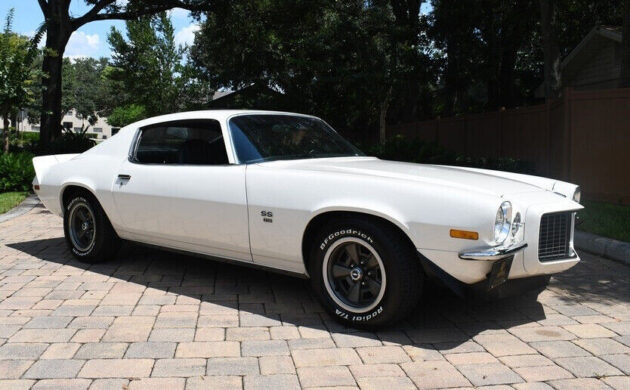
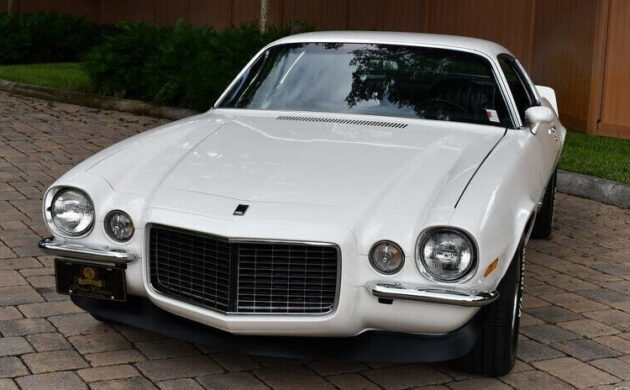

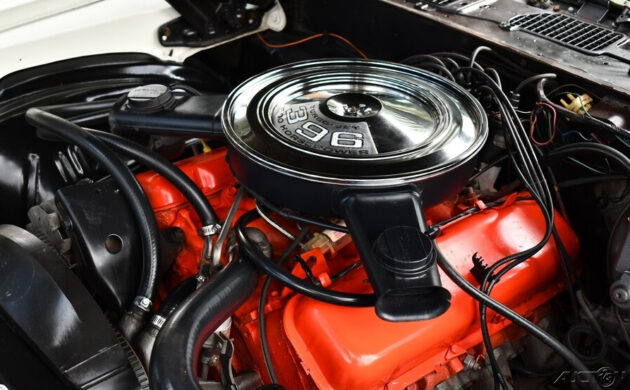
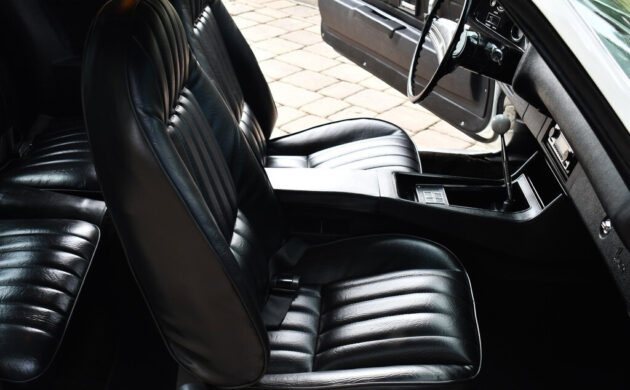
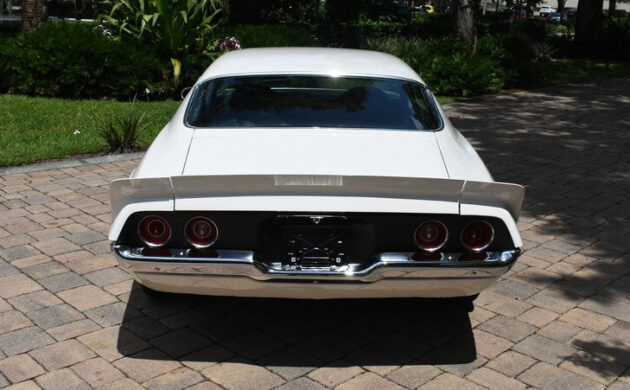


Sweet RS!
Sharp and clean!!!
Dream car for me…Listed for $76,500 on the dealers website… so its just a dream.
I’m not positive about this but I heard the reason for the 402 was a bad batch of blocks that had a problem with the standard bore so Chevy went .030 over
The two popular theories were (1) the possible core shift that required the overbore to correct, and (2) help meet the emission standards. Engines over 400 CID had slightly relaxed emissions over the under 400 CID. Again, theories…
Your number 2 reason is the one that I recall from a 1970 car magazine but I can’t remember which one, Car Craft maybe? The 402 and 454’s canted valve/cylinder head design was great for power but sent a lot of partially combusted fuel out into the exhaust stream – they were tough engines to clean up, pre-catalyst. As an example, and in spite of the differing (or more relaxed) emission standards based on displacement, neither big-block Chevy engine was permitted for sale in California in 1972.
JO
I wonder if this is the same reason Mopar bored out the 383 B block engine about the same time to come up with the 400.
Anyway, I’m not a big Camaro fan, but this is as nice as they come, IMHO. Big block, 4-speed, split bumper in sleeper white? Could be a lot of fun.
The correct answer is that 1/2 million blocks were unloaded off the train and got left outside after a strike. When they returned from strike gm had to find a way to use the blocks, after sitting in the weather, which was to bore them 30 over.
Please share exactly how you arrived at this “correct” answer. This as far as I know is simply a guess. There are variations of this story as well, like the engine plant had a fire and the blocks were damaged by water used to extinguish the fire. This is the first time I heard this particular story. GM crushed vehicles that were left on assembly lines die to strikes rather than try to finish the build process… too many things that could go wrong, and not worth it to GM. If they had water damaged blocks, it would take a bunch of cleanup, flash rust everywhere, lifter bores, mating surfaces for the main caps, gasket sealing surfaces, etc. It would cost a fortune to clean up and machine, and any residual rust left in an oil passages could be a problem… as in warranty and customer satisfaction. Urban myth stuff.
Wow what a cool Camaro. Beautiful car. I wonder how the rear end would handle the torque, and hi-rpm shifts from a manual. Is it reinforced?
The 70 SS396 was equipped with the stronger 12 bolt rear, but beginning in 1971, the the 12 bolt was gone, and the corporate 10 bolt rear was the only rear available. The 71’s did take a ding in HP and torque ratings though. You can build a 12 bolt, but if originality isn’t an issue, I’d go with a 9″ for increased reliability
Jim, I read the same thing about the cubic inch increase for emissions a couple of decades ago, and I, as you cannot recall in which publication that it was published in.
Emissions/fuel economy are the cause of a lot of good engines to be cancelled. That and insurance companies. The 7.3 Ford/International diesel, to name one. They couldn’t get the emissions down to satisfy the govetnment so they come out with the garbage 6.0 that you have to spend a fortune on to bulletproof it. The government always finds a way to squash our fun
I also read about the increase in cubic inches being directly related to emissions certification, but most were “stroked” , like the 454, 460, 455, even the 400 small block chevy, had to do with how testing was done back then, I suppose the Musky clean air bill of ’70 brought shock and awe to the manufacturers.
Nice looking Camaro for sure, I read the hot rod mag road test on a ’71 SS396 Camaro years ago, if I’m not mistaken they claimed the LT1350 Z/28 was quicker, but who cares now. It is just a rare Camaro that shines!
Always been a ford / import guy. Generally think Camaro are … Well , birring in the styling dept. But one exception is this model. Just love the style of these. Most of all the split bumper ones
I keep a registry of these cars. I’m certainly adding this one. No doubt it’s legit. This car has all it’s unique pieces in place. Special fuel lines. Special air cleaner case (easy $800 if you need one), the fuel filter bracket is so rare that I’ve only seen 2 (and used one to have a handmade copy fabricated). Unique fan shroud in place. No re-pops made. I’d love to see the tag on the Harrison HD radiator. Correct hot air stove/shroud in place. $500 if you need one. So, what’s wrong? The exhaust is wrong. It should be a cross flow muffler with chrome tips that exit like the Z/28 along the lower quarter and straight out the rear. The underside of Norwood cars (this is one) should be red-oxide primer, not black like this one. The LA-built cars are black. The rubber bumper-fillers are missing (impossible to find). Hoses are wrong, shouldn’t have a ribbed alternator belt. Firewall should have a crayon-mark Z27 by the heater box. I’d like to see the #’s for the block (should be CLA prefix) and the trans. Yes, the M-22 was available with the 396. This car was made about a month after my ’71 LS3 4sp car.
I noticed the incorrect exhaust system but didn’t want to nit-pick such a fine example so I let it pass.
JO
The UAW strike was in 72. When the strike was settled the 73’s were ready. The 72’s on the line were scrapped because the cost of retrofitting them was too high. 71’s we’re not involved in the work stoppage